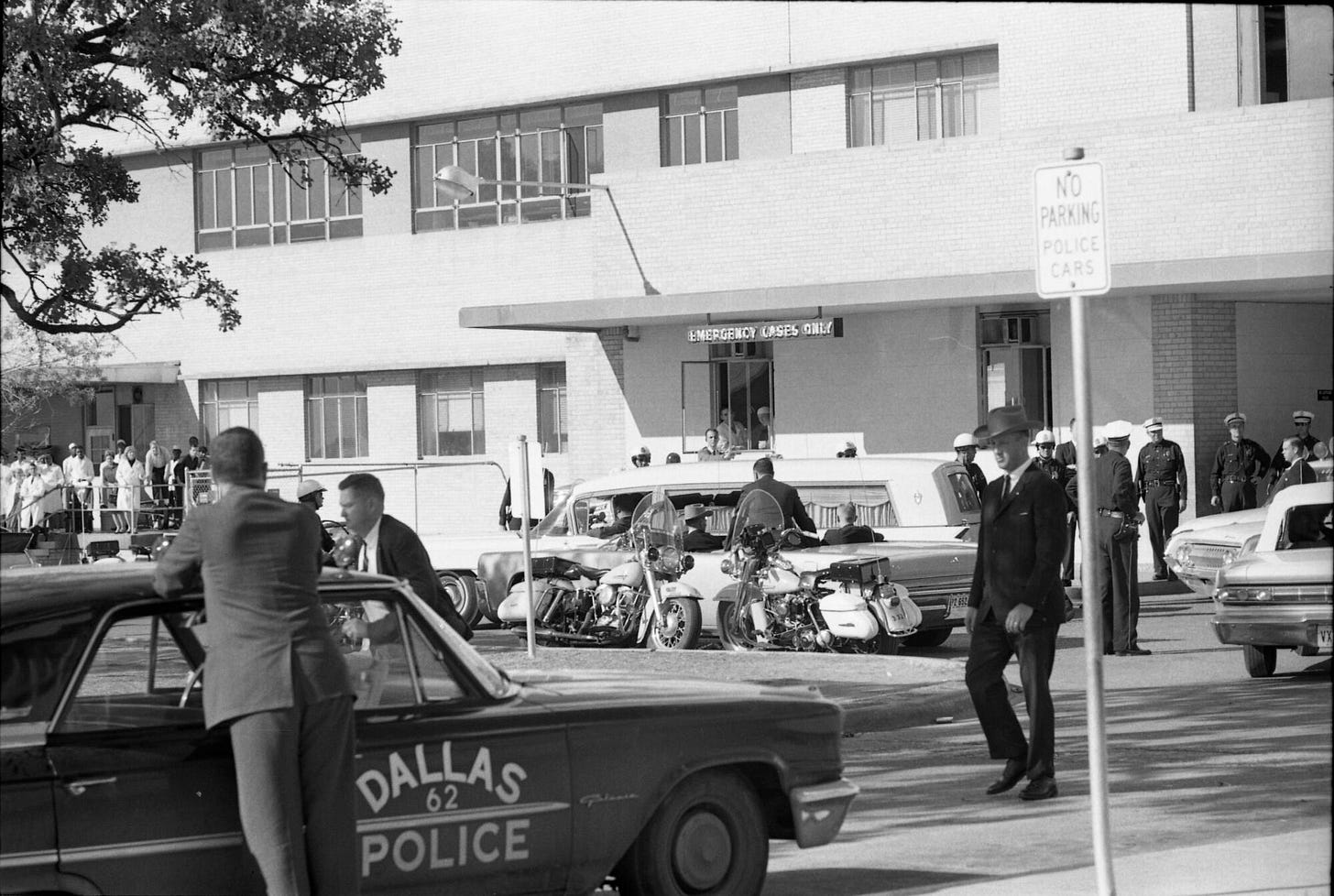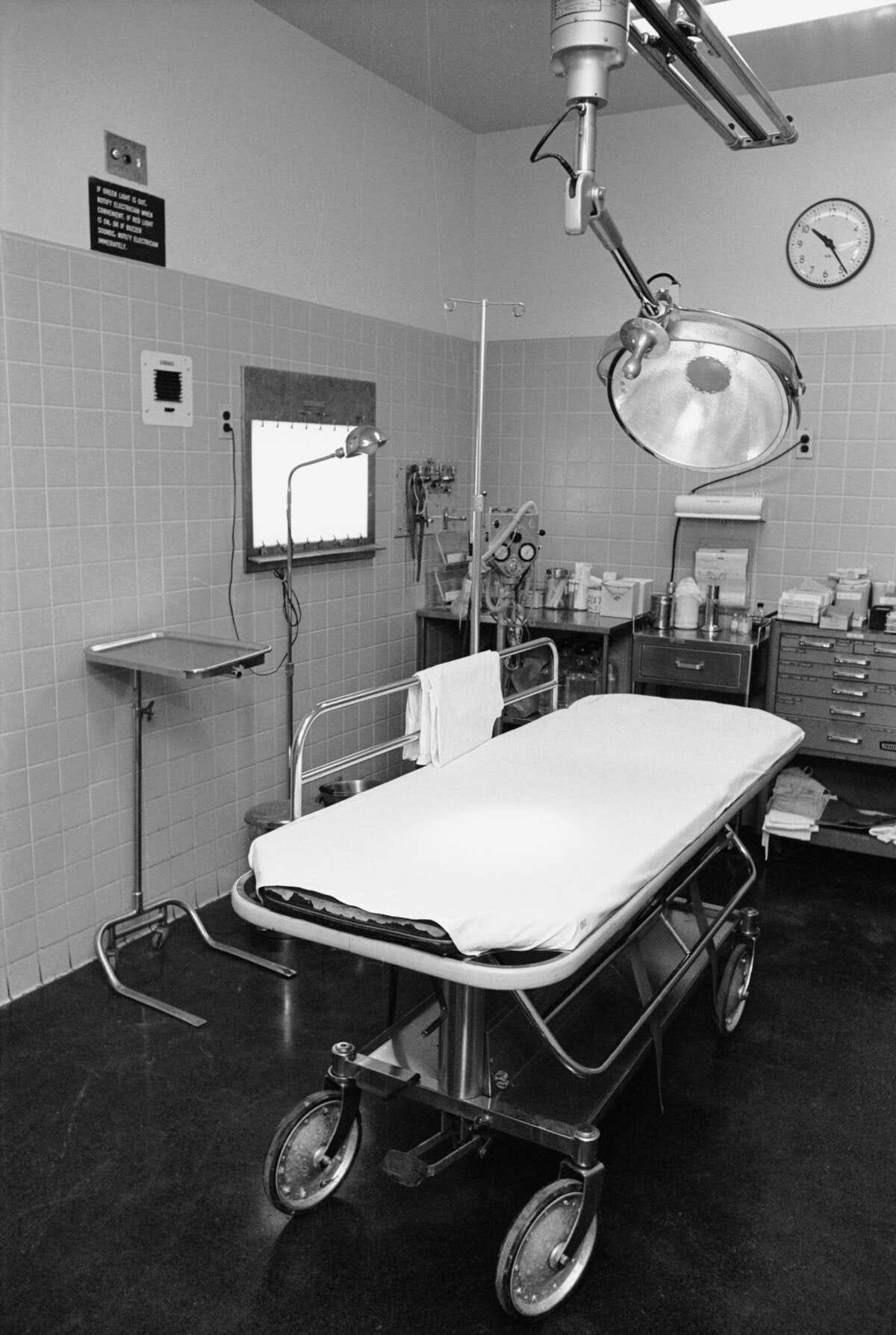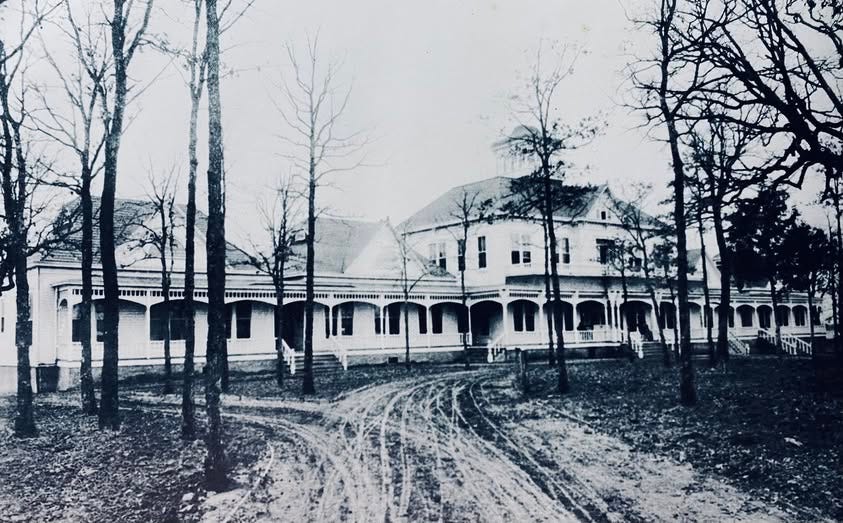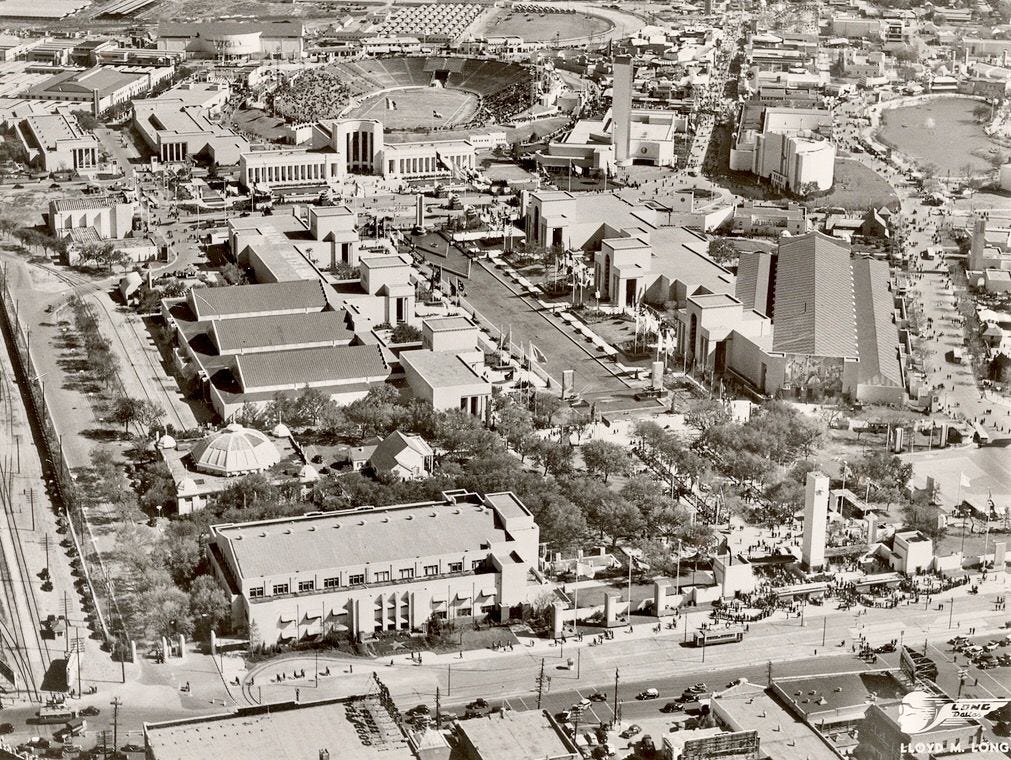Decades of underfunding in Dallas have left many city-owned properties and infrastructure in such disrepair that demolition or total reconstruction became/becomes the only viable option.
Such is now the case with the Iconic Dallas City Hall, built by I.M. Pei, who has a total of 5 projects in this city. Dallas boasts proud ownership of more of Pei’s structures than any city on the planet, save New York City, which has 6. Pei passed away in 2019, so there won’t be any more coming forth.
The original construction cost of Dallas City Hall, completed in 1978, was about $70 million (or $330 million today). With repair estimates already ranging higher than the building’s cost, the net effect is that the building is now effectively totaled.
This pattern spans iconic buildings, public venues, and basic infrastructure, often drawing public ire when beloved or critical assets fall apart. A recent estimate of deferred maintenance for the city is $17 billion. But I guess that number just rose to $17.345 billion.
I should also explain that planning began for the current City Hall in 1964 as a response to the Kennedy Assassination in an effort to modernize Dallas’ image & infrastructure. At the time the seat of our city government was at what we call the Municipal Building, which was the scene where Jack Ruby shot Lee Harvey Oswald. So, its time on postcards was drawing to a close.
A Back Story
There is an undercurrent for this story to me that is personal. The nexus for this blog and my love of local history dates to an extra credit project I did in 11th grade American History class at W.T. White High School. I received permission to use local history so I could do a visual presentation, having done research on the ground and taken pictures myself. I was also able to use the Dallas and Farmers Branch Public Libraries. At the Dallas Public Library, I found a book by the name of Dallas Rediscovered, by Ian MacDonald. It was published by the Dallas Historical Society, who currently occupies the Hall of State building at Fair Park.
This book electrified me. The problem with Dallas not respecting its old buildings was on full display in 1978 when the book was published. On each page, a property was featured using an old photograph. A short history was added and then and then the gruesome truth about its fate lay in the captions. I was aghast that most of the buildings had been torn down, only to have a vacant lot or a convenience store replace it. It was, and still is, beyond tragic.
That book still electrifies me to this very day, and its name serves as the title of this blog, for that very reason. I hope someday to work with the Dallas Historical Society to put out Part II, along with a second printing of the original. But I digress.
By the time I made my presentation, using an Opaque Projector (remember those?), I was all in! I told a joke to highlight the problem. Humor is my way of coping. I prefer laughter over tears. The joke went like this:
Q: What is a 30-year-old building in Dallas?
A: Marked for demolition!
The Pattern of underfunding and neglect
Below are several examples of how this systemic underfunding has plagued Dallas for more than 100 years. It starts with a case study on Parkland Hospital and is followed by several recent examples of the same pattern of neglect and underfunding.
Old Parkland Memorial Hospital (1954–2023)
On Harry Hines Boulevard
Significance:
This hospital was where President John F. Kennedy was pronounced dead in 1963, making it a site of national historical importance. It served Dallas for over six decades. I should note that since 1954 Dallas County assumed control over Parkland Hospital, ending shared governance with the City of Dallas which had been in place prior to this date. However, the fate of the hospital remained the same.
Deferred Maintenance & Demolition:
After the new Parkland Hospital opened in 2015, the old facility was left largely unused. By 2022, it had deteriorated severely, with obsolete systems and unrepairable infrastructure. Officials opted for phased demolition, completed in 2023. No attempt was made to save the historic entrance where the official public announcement of John F. Kennedy’s death was made. The operating room was also lost.
Public Reaction:
The decision sparked debate, especially since the building was never granted historical landmark status. Former staff and preservationists expressed sadness over the loss of a site with deep historical resonance. Officials defended the move as a cost-saving necessity.
Old Old Parkland Memorial Hospital (1913–1954)
aka The Red Brick Parkland and until 2015 aptly named “Old Parkland”
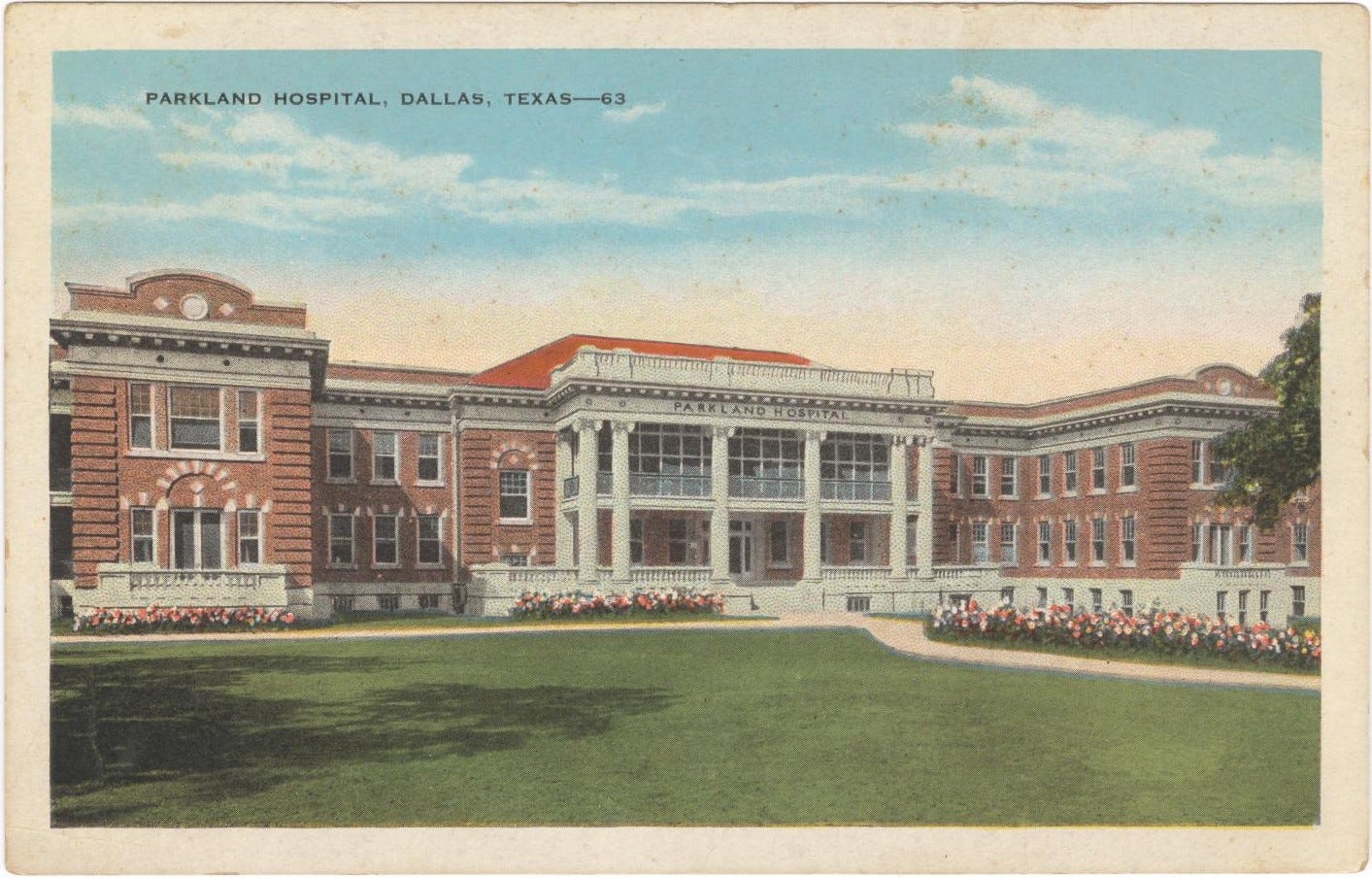
Significance:
This structure is located at Oak Lawn and Maple and is deemed “Old Parkland Hospital”, which was true at the time of its rescue in 2006. This hospital still stands, despite decades of neglect, that finally ended with the purchase by Crow Holdings who has restored the buildings at great expense and uses it as their headquarters. After the demolition of its successor, this is the only “Old” Parkland building still in existence.
Deferred Maintenance:
The hospital, built in 1913, was considered obsolete by the 1950s. Despite expansions in the 1930s—including new wings, a psychiatric ward, and a venereal disease clinic—the facility could no longer meet the demands of a growing city or modern medical standards.
Overcrowding and Expansion Needs:
By the early 1950s, Dallas’s population and healthcare needs had outgrown the old hospital. The site was too small and constrained to accommodate further expansion. The city and county opted to build a new Parkland Hospital, on Harry Hines, a mile away to better serve the community and support the newly formed Southwestern Medical College, which had been using the old hospital for clinical teaching.
Shift in Medical Education and Services:
The old hospital had become a hub for chronic care, tuberculosis treatment, and psychiatric services, but it lacked the infrastructure for advanced medical education and acute care. The move to a new facility aligned with Dallas’s ambition to become a center for academic medicine and research, especially with the growth of UT Southwestern Medical Center.
Post-Abandonment Use and Decline:
After the hospital relocated in 1954, the old building continued to serve various purposes, including housing long-term patients and later functioning as a low-security jail. However, it eventually fell into disrepair and vandalism, with only partial renovation attempts until it was left vacant for years.
A Rare Rescue:
This building was spared the wrecking ball, due to extensive renovations and rehabilitation by Crow Holdings which uses it as their headquarters. In 2006, Crow Holdings purchased the property and began a $300 million transformation into a private business campus. The redevelopment preserved the historic architecture while adding new office space, turning the site into one of Dallas’s most exclusive commercial addresses.
Old Old Old Parkland Memorial Hospital (1894–1913)
aka, the Wooden Parkland or the Original Parkland
Significance:
This was the original Parkland hospital that was made of wood and the nickname the Wooden Parkland is used to differentiate it from its successor on the same plot of land. It was located on a 17-acre tract that was originally intended as a City Park, hence the name Parkland.

Outdated facilities & Demolition:
Replaced Due to Overcrowding and Modernization Needs. By the early 20th century, Dallas’s population growth and medical demands had outpaced the capabilities of the wooden hospital. A meningitis epidemic in 1911 underscored the need for better facilities, prompting the construction of a brick hospital in 1913 on the same site. This original set of buildings lasted only 19 years.
Fair Park (1936–Present)
Significance:
Fair Park is home to Art Deco landmarks, museums, the Cotton Bowl, and the State Fair of Texas. It was the site of the 1936 Texas Centennial Exposition and is considered a cultural treasure.
Deferred Maintenance & Risk of Demolition:
Decades of neglect led to crumbling facades, non-functional fountains, and leaky roofs. The Hall of State suffered millions in damage during the 2021 winter storm due to aging infrastructure. Without intervention, some structures faced potential demolition. This massive complex is expensive to maintain and many efforts to improve the situation have ended in failure. One recent success story is the recent completion of extensive Cotton Bowl improvements to bring the stadium up to modern standards.
Public Reaction:
Outrage grew as images of decay surfaced. Preservationists and park officials condemned the neglect, calling it a betrayal of Dallas’s heritage. A scandal erupted in 2024–25 over mismanagement of funds by a private partner tasked with upkeep. Make some popcorn, because this battle is far from over!
Reunion Arena (1980–2009)
Significance:
Reunion Arena was a city-owned indoor venue that hosted the Dallas Mavericks (NBA), Dallas Stars (NHL), major concerts, and the 1984 Republican National Convention. It was a central hub for sports and entertainment in Dallas.
Deferred Maintenance & Demolition:
By the early 2000s, the arena was losing money after its major tenants relocated. In 2008, the city voted unanimously to demolish the 28-year-old facility, citing the high cost of upkeep and lack of viable reuse plans. Demolition was completed in 2009.
Public Reaction:
While some residents mourned the loss of a beloved venue, most accepted the decision as fiscally necessary. Critics pointed out the city had no proactive plan to repurpose the site, and millions were spent maintaining an empty building before demolition.
It’s not just buildings anymore!
City Streets & Roads
Significance:
Dallas maintains over 11,000 lane-miles of roads, essential for mobility, commerce, and emergency services.
Deferred Maintenance & Impact:
The city has a $7 billion street repair backlog. Many roads went decades without repaving, leading to potholes and structural failures. Some bridges became unsafe and required full replacement.
Public Reaction:
Nearly half of Dallas residents rated street maintenance as “poor” in a 2024 survey. Complaints about vehicle damage and unsafe conditions are widespread. Neighborhood groups have protested the slow pace of repairs and demanded increased funding.
Traffic Signals & Street Lights
Significance:
These systems are vital for traffic safety and urban functionality.
Deferred Maintenance & Impact:
Over half of Dallas’s traffic signals are more than 40 years old. After the 2019 tornado, FEMA refused to fund modern replacements, not covering outdated equipment. Some intersections had temporary signals for over four years. The City had to foot the bill for over $30 billion in damages, because they weren’t conducting regular updates of our infrastructure.
Public Reaction:
Residents voiced frustration over prolonged outages and safety risks. Officials acknowledged the absurdity of maintaining obsolete systems. The situation became a symbol of bureaucratic failure and infrastructure neglect.
Call to Action:
In each case above, deferred maintenance snowballed over many years, eventually making the cost or feasibility of rehabilitation prohibitive. By the time the city or county took action, options were limited to either an expensive overhaul or teardown, often the latter. This trend isn’t new – it stretches back for 100+ years and continues to this today.
We need to stop this pattern in its tracks by updating the City’s charter so that maintenance cannot be deferred. If you don’t take your car in for maintenance, it will decline more rapidly and result in far larger charges in the future. It’s that simple. Say “NO” to deferred maintenance.
The writing I see on the wall, is that the American Airlines Center at Victory Plaza will become the next neglected building as the Mavs plan their exit in 2031. Otherwise, my prediction is that by 2041, we will face this same dilemma, and this cherished landmark will face the wrecking ball with everyone shrugging their shoulders and saying there is nothing more we could do.
The “new” Parkland Hospital will eventually suffer this fate and within months of opening was already overcrowded, despite the fact that it was intended to last for decades.
But as for Dallas City Hall, if we MUST now lose this architectural wonder, I say that our price tag should be $17.345 billion. They want it for a casino, let’s face it, and can easily make it up. Otherwise, they can go fleece some other city with their team as a dangling carrot. I’m sure Arlington is happy to give away the store, as they always are. We can use that money to catch the city up on deferred maintenance and break the cycle.
Bibliography of Sources
Dallas City Hall Maintenance Costs: https://www.dallasnews.com/news/watchdog/2024/01/26/dallas-city-hall-is-crumbling-should-we-save-it-or-start-over/
Reunion Arena History: https://www.dallasnews.com/news/2008/11/17/reunion-arena-demolition-begins/
Old Parkland Hospital Redevelopment: https://www.dallasnews.com/news/2006/06/29/parkland-s-old-campus-to-become-office-complex/
Fair Park Deferred Maintenance: https://www.dallasnews.com/news/2024/01/30/fair-park-board-members-angry-over-years-of-neglect-and-mismanagement/
Dallas Traffic Signal Repairs After Tornado: https://www.dallasnews.com/news/watchdog/2024/01/12/after-4-1-2-years-dallas-finally-replaces-tornado-damaged-stoplights/
Dallas Street Conditions Survey: https://www.dallasnews.com/news/watchdog/2024/01/19/dallas-residents-rate-street-maintenance-as-poor-in-city-survey/
Dallas County Hospital District History: https://www.parklandhealth.org/parkland-history
Old Parkland Hospital History: https://www.dmagazine.com/publications/d-magazine/2011/june/the-history-of-old-parkland/
Crow Holdings Redevelopment of Old Parkland: https://www.dmagazine.com/publications/d-ceo/2011/june/old-parkland-crow-holdings-dallas/
I.M. Pei Projects List: https://en.wikipedia.org/wiki/List_of_I._M._Pei_projects
Dallas Tornado FEMA Repairs: https://www.dallasnews.com/news/watchdog/2020/01/10/dallas-traffic-signals-damaged-by-tornado-wont-be-upgraded-fema-says/
Dallas City Hall Landmark Status Debate: https://www.dallasnews.com/news/watchdog/2024/03/01/dallas-city-hall-landmark-status-im-pei-demolition/




